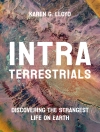The Carboniferous Shannon Basin of Western Ireland has become one of the most visited field areas in the world. It provides an ideal opportunity for examining a wide range of ancient sedimentary environments, including carbonate shelf, reefs and mud mounds, black shales and phosphates, and a spectrum of deep sea, shallow marine, fluvio-deltaic and alluvial siliciclastic sediments. The area boasts extensive outcrops and some of the most renowned sections through turbidites, large-scale soft sediment deformation features and sediments that display a response to tectonic and sea-level controls.
This field guide provides the first synthesis of the principal localities in this area of Western Ireland, and presents an easily accessible handbook that will guide the reader to, and within, a wide range of sedimentary facies, allowing an understanding of the evolving nature of the fill of this Carboniferous basin and the context of its sedimentary and tectonic evolution. The guide summarizes recent and new work in the area by a range of authors and outlines issues of current debate concerning the Shannon Basin and its palaeoenvironmental interpretation. The field guide will find extensive use in teaching and research by academic researchers, professional and amateur geologists, as well as by applied geologists, geophysicists and reservoir engineers who use these outcrops as analogues for subsurface reservoirs in many areas of the world.
विषयसूची
Contributors vii
Acknowledgements ix
About the Companion Website xi
1 Introduction to the Field Guide 1
Jim Best & Paul B. Wignall
2 The Shannon Basin: Structural Setting and Evolution 16
John Graham
3 Basin Models 35
Paul B. Wignall & Jim Best
4 Lower Carboniferous of the Shannon Basin Region 48
Ian D. Somerville
5 Viséan Coral Biostromes and Karsts of the Burren 79
Ian D. Somerville
6 The Clare Shales 97
Paul B. Wignall, Ian D. Somerville & Karen Braithwaite
7 Architecture of a Distributive Submarine Fan: The Ross Sandstone Formation 112
David R. Pyles & Lorna J. Strachan
8 Evolving Depocentre and Slope: The Gull Island Formation 174
Lorna J. Strachan & David R. Pyles
9 The Tullig and Kilkee Cyclothems in Southern County Clare 240
Jim Best, Paul B. Wignall, Eleanor J. Stirling, Eric Obrock & Alex Bryk
10 The Tullig and Kilkee Cyclothems of Northern County Clare 329
Paul B. Wignall, Jim Best, Jeff Peakall & Jessica Ross
11 The Younger Namurian Cyclothems around Spanish Point 350
Paul B. Wignall & Jim Best
Appendix: List of Giga Pan Images 361
References 362
Index 371
लेखक के बारे में
Jim Best holds the Jack and Richard Threet Chair in Sedimentary Geology at the University of Illinois at Urbana-Champaign, USA, and has research interests in process sedimentology and the dynamics of alluvial, lacustrine, deltaic and deep-sea environments. His work concerns experimental research and field studies in both modern and ancient environments, including fieldwork in Argentina, Bangladesh, Canada, Cambodia, Chile, New Zealand and the UK.
Paul Wignall is Professor of palaeoenvironments at the University of Leeds, UK, and his principal research interests lie in the origin and characteristics of mass extinction events in the geological record. He has also pioneered research in mudrocks and palaeoenvironmental change in ancient oceans, and has conducted field work across the globe, including Canada, China, Greenland, Svalbard, Poland, Tibet, USA and the UK.
Jim Best and Paul Wignall have also led student, academic and industrial field trips to, as well as conducted research in, the Shannon Basin of Western Ireland for over 25 years.












